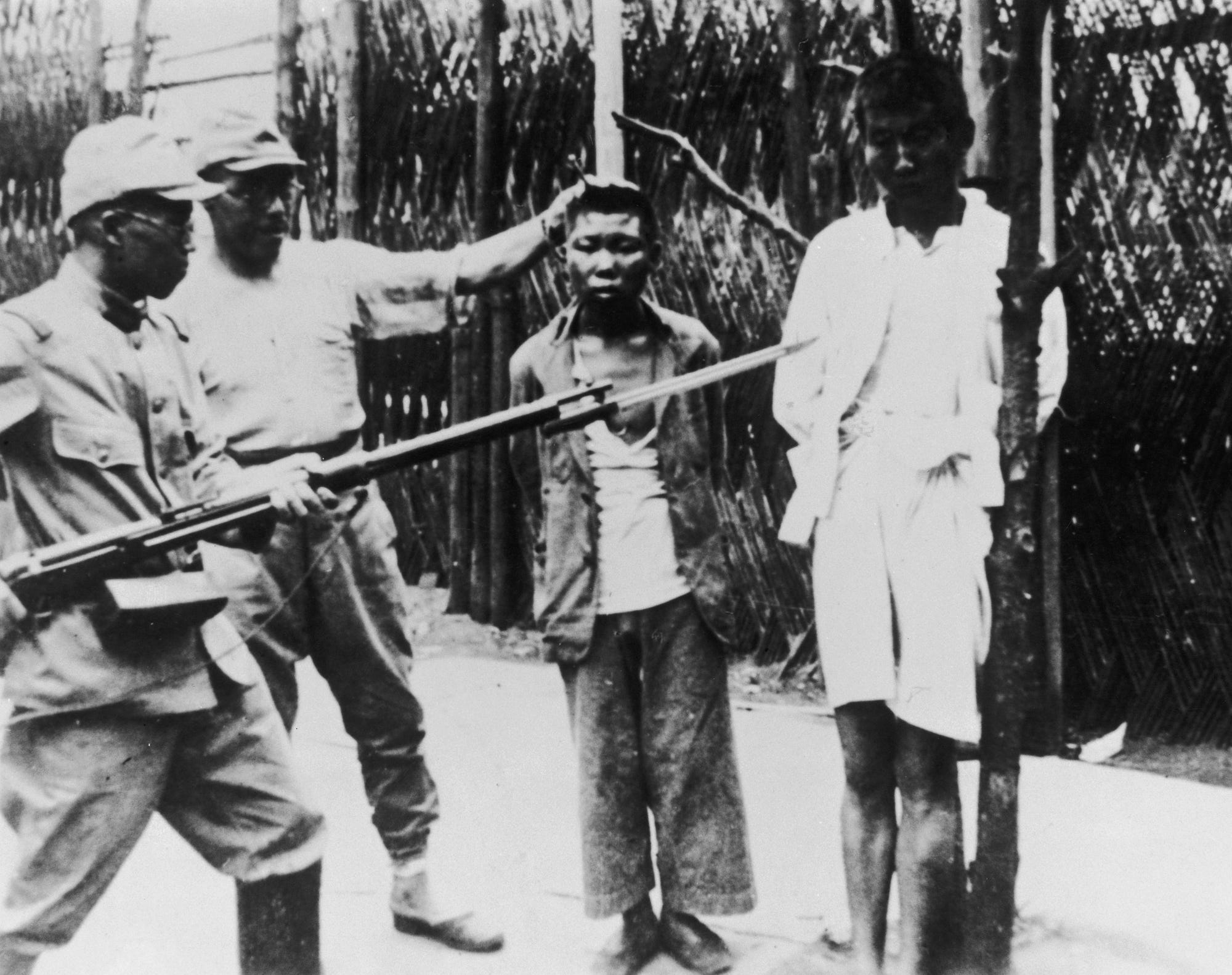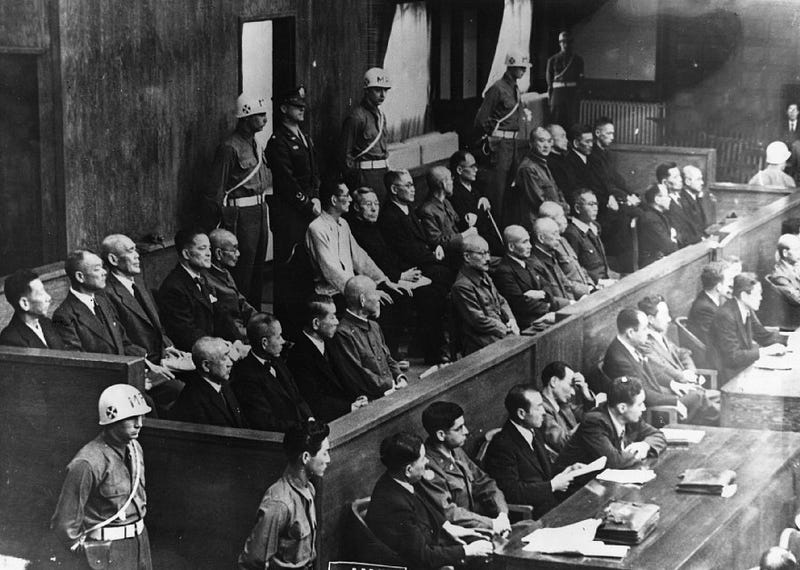The Asian Holocaust Killed Twice As Many People As The Nazis Did
So why have you never heard of it?
Afew days ago, China announced that it would re-write its school textbooks to add 6 years to a war it fought with Japan in the 1930s and 40s. Rather than listing the war as lasting “from 1937–1945,” the new books would describe the conflict as spanning 14 years, from 1931–1945.
Over the past few decades, China has sought to bring more and more attention to the suffering Japan inflicted on its people and re-writing its history books is just another way of doing that. On the other hand, the news is a reminder that Japan raped, tortured and murdered tens of millions of people in what’s become known as “the Asian Holocaust” — something that textbooks in Western countries barely even mention at all.
Below is an overview of the litany of atrocities Japan committed during the Second Sino-Japanese War, which was a kind of parallel conflict alongside World War II.
Itall began in 1931 when Japan, seeking to increase the size of its empire and exploit China’s vast natural resources, invaded and occupied the province of Manchuria.
Six years later, judging its occupation a success, Japan mounted a full-scale invasion of China, a move that sparked a full blown war that would leave 20 million Chinese people dead. (Some estimates have put the figure as high as 50 million, but humanity will likely never know the exact extent of Japan’s barbarity.)
During the war, Japan also invaded a number of other parts of Asia, including Malaya, Burma, Indochina, the Philippines and the Dutch West Indies. In those invasions, the Japanese killed an additional 8.6 million people.
‘Comfort women’ (read: forced prostitution)
Japan’s military applied the euphemism “comfort women” to describe women of conquered countries who were forced into sexual slavery and raped by Japanese soldiers. Historian Yoshiaki Yoshimi found incontrovertible evidence that the Japanese built about 2,000 “comfort stations” around Asia where Japanese soldiers could rape native women. These 2,000 rape centers held as many as 200,000 women from Korea, the Philippines and other countries.
Mass rape and murder
After the Japanese captured the Chinese city of Nanjing in December 1937, they perpetrated one of the worst massacres of the 20th century (and there’s some stiff competition for that).
In Nanjing, Japanese troops “let loose like the hordes of Genghis Khan,” writes British historian Edward Russell. Soldiers rampaged the streets, murdering anyone they saw. Russell found burial statistics indicating more than 150,000 people were buried in mass graves, most with their hands tied behind their backs. He estimated 200,000 had died; later estimates range to more than 300,000 in a period of just 6 weeks.
The violence appalled even Nazi Germany, still a few years away from committing its own holocaust. The German embassy in China wrote to Berlin that the “atrocities and criminal acts of an entire army” amounted to “bestial machinery.”
By one estimate, 20,000 women were raped. “So that we will not have any problems on our hands,” one company commander told his men, “either pay them money or kill them in some obscure place after you have finished.”
As Japan met resistance in conquering China, the Nanjing blueprint was applied to the whole country. Surveying the aftermath of the war in 1945, researcher Gavan McCormack described a landscape of torched villages, “people-reducing kilns” (which the Japanese called renjiro) and mass graves, or “ten thousand people pits” (bajinkō).
Mistreatment of POWs
Japanese military leaders who were later defendants at the War Crimes Tribunals argued that Japan had not been bound by the 1929 Geneva Convention, which it had signed but never ratified. But Japan was bound by Fourth Hague Convention of 1907, which stated that POWs remained “under the protection and principles of the laws of nations as they resulted from the usages of civilized peoples, the laws of humanity, and the dictate of public conscience.”
Japan forced POWs to endure 130-mile death marches and forced labor on war-related projects. They were denied adequate food, water and medical care. They were beheaded, or used as targets for rifle and machine gun practice.
Japan treated its POWs even worse than the Nazis: After the war, tribunals found that Japan had interned some 350,000 prisoners of war. An estimated 27% of Allied POWs died in captivity, compared to a mere 4% of POWs who died in German and Italian captivity.
Cannibalism
Witnesses and official documents confirm many cases of Japanese soldiers eating the corpses of prisoners and enemies they’d killed in battle. Records show that Japanese soldiers ate Australian soldiers and local civilians in New Guinea. A downed American pilot watched as the same fate befall a fellow airman. Witnesses said the Japanese soldiers sometimes washed down the meat with sake. In recounting evidence of cannibalism, historian Toshiyuki Tanaka wrote that it was not engaged in because supplies were scarce, as the Allies had concluded, but was used as a power projection tool.
The Japanese would kill prisoners and then “eat the flesh” from their bodies, according to one Indian Army officer. “The liver, muscles from the buttocks, thighs, legs, and arms would be cut off and cooked,” the officer, Captain Pirzai, told Australia’s Courier-Mail in 1945.
Medical and biological warfare
In a macabre practice that would later be committed by Nazi doctors, Japanese Army Unit 731 conducted experiments on thousands of Chinese and Russian prisoners of war. They exposed subjects to cholera, plague, hemorrhagic fever, typhoid and syphilis. They removed their organs and drilled holes in their heads. Prisoners were sprayed with salt water to induce frostbite in subzero temperatures and then hit with hammers — all in the name of science.
“No matter what was done, anything was permissible so long as it was “for the country” or for the “good of society,” write Japanese historians Tsuneishi Keiichi and Tomizo Asano in their 1982 book, “Suicide of Two Physicians.”
Werner Gruhl, author of “Imperial Japan’s World War Two,” estimates the Japanese killed 250,000 Chinese by biological experimentation and biological warfare.
The legacy of Japan’s wartime atrocities
Japan’s holocaust ended when the US dropped two atomic bombs on the country in August, 1945. The bombs killed at least a quarter of a million Japanese people (and scarred its national psyche forever). Japan surrendered unconditionally 9 days later.
Only 28 Japanese military and government officials were tried at the Tokyo War Crimes Tribunal in 1946. (The tribunal was overseen by the US.) Three died during trial. The other 25 were found guilty. Of those, 7 were hanged and 18 were sentenced to prison terms, but were pardoned by 1958. Scandalously, in 1959, Japan’s Emperor Hirohito ordered the names of the war criminals added to a shrine in Tokyo where Japanese have traditionally memorialized their fallen fighters.
“I have a special appreciation for the families of our war criminals,” Hirohito said in a benediction. “I know what they have done for Japan. They were among our greatest leaders.” Subsequent Japanese leaders have visited the shrine but claim they are not honoring war criminals, just fulfilling their obligations to the dead.
China vigorously opposes presidential visits to the Yasukuni shrine, and has been demanding an apology for the Rape of Nanjing and other atrocities — but only for the last few decades. Before that, according to GRI Senior Analyst Jeremy Luedi, China’s Maoist leaders hadn’t drawn attention to the Rape of Nanjing because they wanted to showcase events that portrayed Chinese as fighters, not victims, and also because the victims in Nanjing were not the Communists, who took over China after the war, but their rivals — the Nationalists.
Former “comfort women” have also demanded a full apology from Japan for decades. In a compromise for Japan’s nationalist prime minister Shinzo Abe, Japan’s government agreed in December to pay a combined $8.3 million to the women (or their next of kin). The deal was immediately criticized by South Korean opposition parties and former comfort women, who have demanded a deal that opens Japan up to legal liability.
Many Japanese are unaware of their nation’s war crimes, as are young people in the countries that were prey to Japan’s brutal imperialism. The comfort women represent the last human faces of Japan’s wartime atrocities, and they are either elderly or dead. It is up to historians — and all of us — to ensure that the memory of Japan’s atrocities does not die with them.





Geen opmerkingen:
Een reactie posten